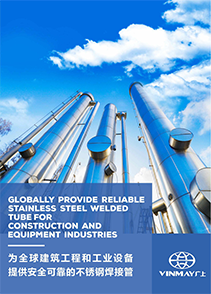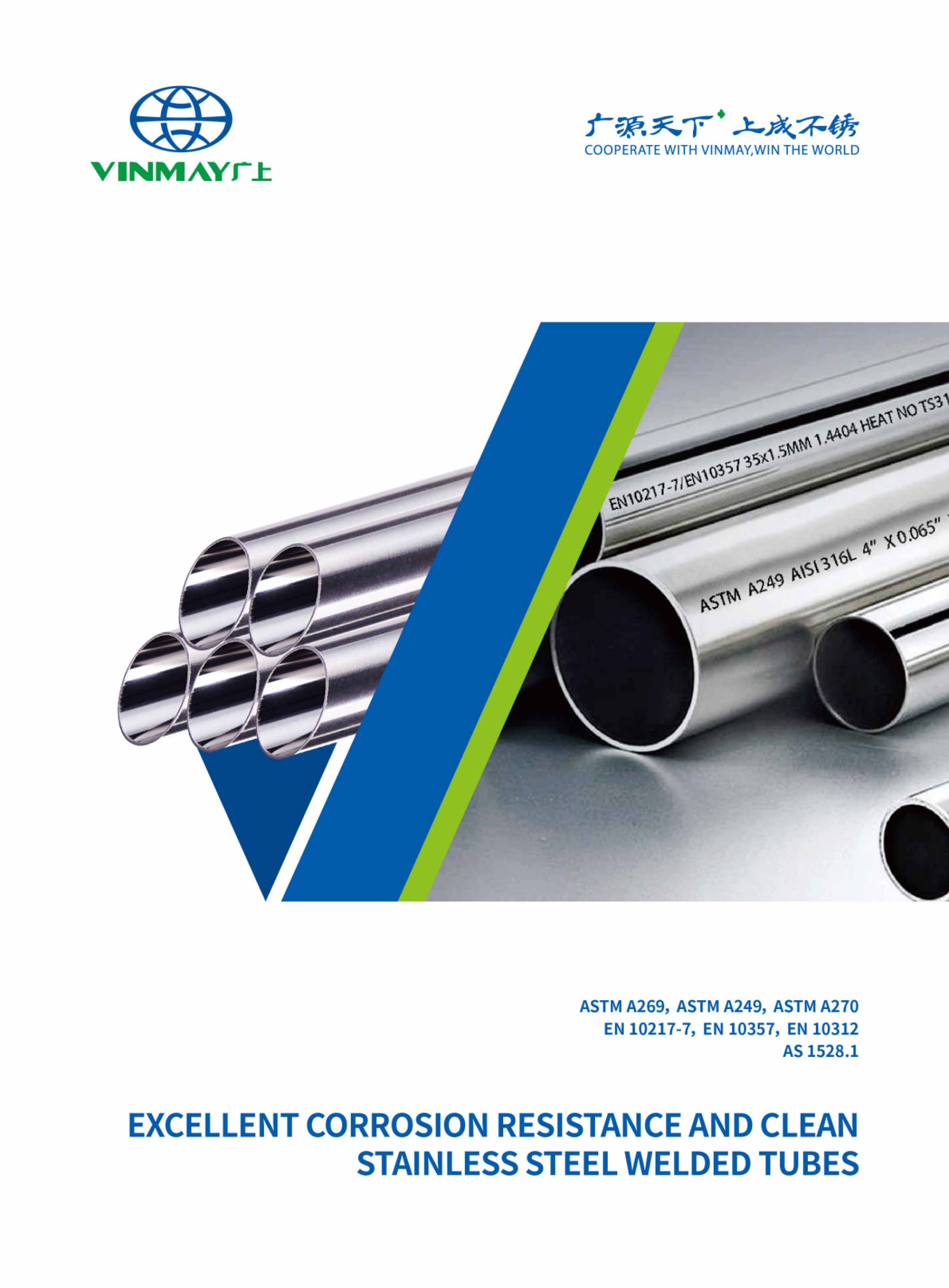When comparing stainless steel to carbon steel pipes, the distinctions in composition, corrosion resistance, and application suitability are paramount. Stainless steel contains chromium, enhancing its resistance to oxidation and harsh environments. Carbon steel, although cost-effective, is prone to rust and requires protective coatings. These differences influence their strength, durability, and welding requirements. Each material serves distinct roles across industries, prompting critical evaluation to determine the most appropriate choice.
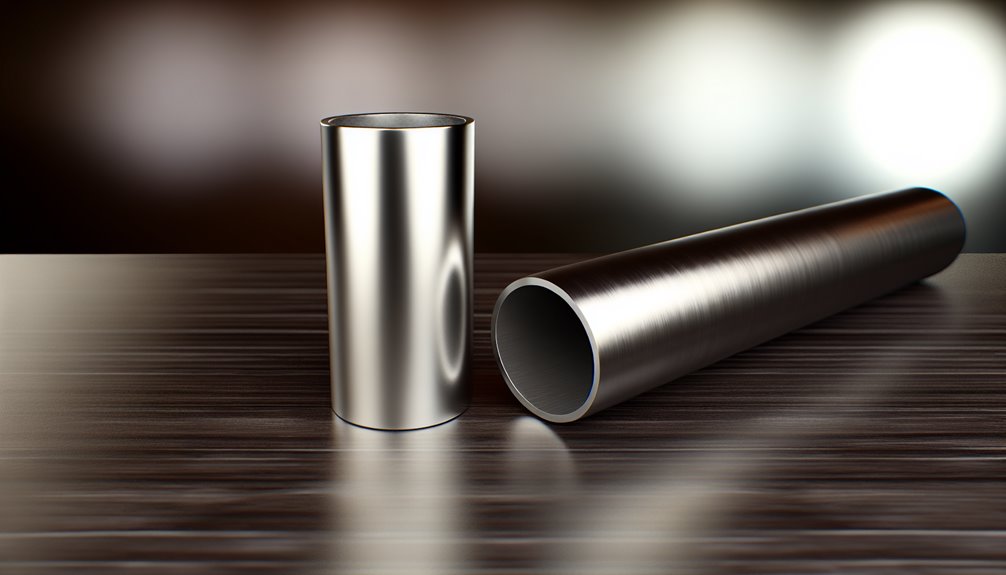
Stainless steel and carbon steel pipes differ considerably in their composition and material properties, influencing their applications and performance.
Composition variations are significant; stainless steel contains chromium, providing a protective oxide layer, while carbon steel primarily consists of iron and carbon. The presence of chromium in stainless steel, often exceeding 10.5%, offers enhanced mechanical properties and heat resistance, essential for demanding environments.
Stainless steel's chromium content surpasses 10.5%, granting superior mechanical properties and heat resistance for challenging environments.
Conversely, carbon steel's composition allows for diverse material grades, each with specific attributes to suit varied structural applications. These material grades impact tensile strength, ductility, and weldability.
Carbon steel's simpler composition results in cost-effectiveness, yet limits its performance under extreme conditions. Understanding these fundamental differences is vital for selecting the appropriate pipe material for specific engineering demands.
In comparing the corrosion resistance of stainless steel and carbon steel pipes, stainless steel exhibits superior oxidation resistance due to its chromium content, forming a passive layer that impedes further oxidation.
Long-term durability is considerably enhanced in stainless steel, especially in environments with high moisture or chemical exposure, whereas carbon steel is prone to rust and degradation over time without protective coatings.
These differences in corrosion resistance have substantial implications for material selection in varying industrial applications.
A fundamental aspect that distinguishes stainless steel from carbon steel is their respective oxidation resistance levels, a critical factor in selecting materials for various applications.
Stainless steel exhibits superior oxidation resistance due to its chromium content, which forms a passive oxide layer, effectively preventing further oxidation. In contrast, carbon steel lacks this protective layer, making it more susceptible to oxidation under similar conditions.
Oxidation prevention methods for stainless steel include alloying with elements like nickel and molybdenum, enhancing its protective capabilities.
Oxidation resistance testing, often conducted under accelerated conditions, evaluates the material's performance in environments prone to oxidizing agents. Such testing substantiates stainless steel's advantageous properties over carbon steel, guiding informed material selection for industries prioritizing longevity and corrosion resistance.
Corrosion resistance is a pivotal factor in evaluating the long-term durability of piping materials.
Stainless steel pipes exhibit superior long-term performance due to their high chromium content, forming a passive layer that inhibits oxidation. In contrast, carbon steel pipes are prone to rust when exposed to moisture, leading to compromised integrity over time.
A thorough durability assessment indicates:
Selecting the appropriate material guarantees ideal long-term performance and reduced maintenance costs.

When evaluating the strength and durability of stainless steel versus carbon steel pipes, it becomes essential to contemplate their distinct mechanical properties and performance metrics.
Stainless steel pipes are renowned for their superior tensile strength, offering better resistance to deformation under stress. This characteristic makes them highly suitable for applications requiring sustained load-bearing capacity. Additionally, stainless steel exhibits excellent fatigue resistance, which is critical in environments subject to cyclic loads or vibrations.
Conversely, carbon steel pipes, while potentially having a lower tensile strength compared to stainless steel, provide adequate durability for numerous applications. However, carbon steel’s susceptibility to fatigue can be a limiting factor under certain stress conditions.
Ultimately, the choice between these materials hinges on the specific application requirements and environmental considerations.
The evaluation of material density is essential when comparing stainless steel and carbon steel pipes, as it directly influences their respective weights and suitability for various applications.
Stainless steel typically exhibits a higher density than carbon steel, resulting in heavier pipes that may affect transportation and structural considerations.
Consequently, the weight differential between these materials can considerably impact application-specific decisions, particularly in scenarios where weight constraints are vital.
Material density plays a pivotal role in the selection of piping materials, particularly when comparing stainless steel and carbon steel pipes.
Density measurement techniques are critical for determining specific material characteristics. The implications of material density on these piping materials can be summarized as follows:
These factors critically inform material selection processes.
Weight considerations considerably influence the choice between stainless steel and carbon steel pipes in various applications.
Stainless steel, with its higher density, results in greater weight distribution, affecting the overall load-bearing capacity of structures. Consequently, application suitability becomes critical; stainless steel is often preferred in environments requiring enhanced structural integrity with resistance to corrosion.
Conversely, carbon steel pipes, characterized by lower density, offer advantages in applications where minimization of weight is paramount, such as in automotive and aerospace industries. The reduced mass of carbon steel facilitates easier handling and installation, optimizing operational efficiency.
Evaluating weight impact on applications involves a strategic assessment of the specific requirements of each project, balancing the need for durability with the constraints of weight and cost.
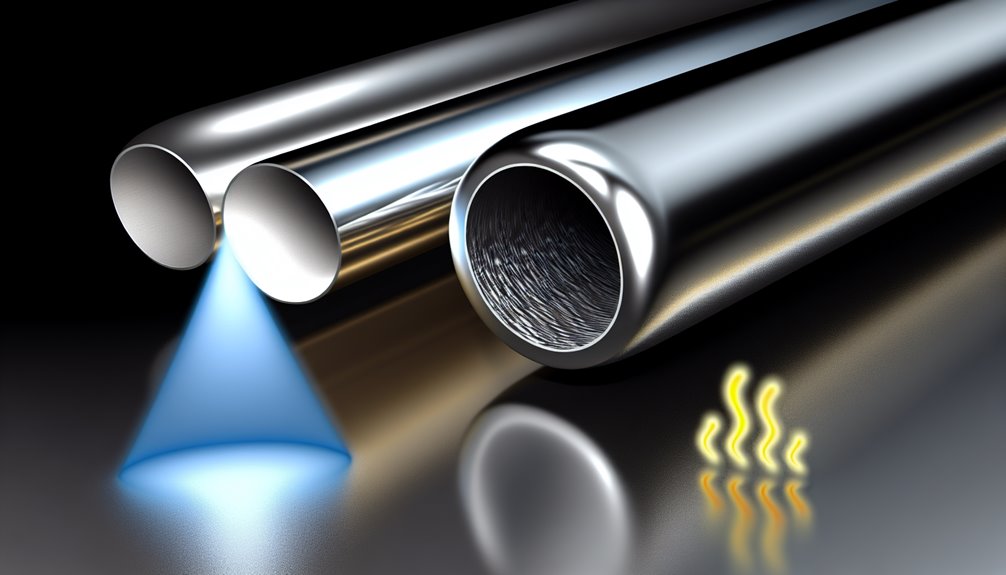
How do stainless steel and carbon steel pipes differ in thermal conductivity and expansion? Understanding these differences is crucial for applications that require precise thermal management.
The analytical approach to understanding these properties assists engineers in selecting the most suitable pipe material based on thermal demands, ensuring ideal operational control and efficiency.
When evaluating cost and economic factors between stainless steel and carbon steel pipes, material cost emerges as a primary consideration, with stainless steel typically commanding a higher price point due to its alloy composition.
However, this initial investment may be offset by reduced maintenance requirements and superior longevity, which can lead to lower long-term expenses.
Additionally, installation expenses, influenced by factors such as weight and ease of handling, further differentiate the economic impact of these materials.
In the domain of piping materials, the cost comparison between stainless steel and carbon steel is pivotal for project budgeting and economic feasibility.
Key factors influencing material pricing include:
Thus, understanding these components is essential for informed decision-making in material selection.
Although both stainless steel and carbon steel pipes play critical roles in various applications, their maintenance requirements and longevity greatly impact their overall economic viability.
Stainless steel pipes, renowned for their corrosion resistance, demand minimal maintenance practices and exhibit superior longevity. Their inherent durability reduces the necessity for frequent preventive measures, translating into lower lifecycle costs.
Conversely, carbon steel pipes are more susceptible to corrosion, necessitating rigorous maintenance practices, including regular inspections and protective coatings. This increased maintenance burden can adversely affect their economic efficiency over time.
Analyzing the economic implications, stainless steel offers enhanced longevity with reduced maintenance efforts, while carbon steel requires significant preventive measures to sustain operational integrity, thereby affecting its cost-effectiveness in long-term applications.
While evaluating the installation expenses of stainless steel versus carbon steel pipes, a detailed analysis of both material costs and labor requirements is essential.
Stainless steel pipes generally incur higher initial costs due to the premium nature of the material. However, they offer advantages in specific applications, potentially reducing long-term expenses.
Carbon steel pipes, on the other hand, are more economical upfront but may involve additional maintenance costs.
Consider these factors:
A thorough evaluation facilitates informed decision-making.
When evaluating the maintenance and longevity of stainless steel versus carbon steel pipes, several critical factors come into play, including corrosion resistance, mechanical wear, and environmental conditions.
Stainless steel pipes exhibit superior corrosion resistance due to the presence of chromium, reducing the frequency of required maintenance schedules. Conversely, carbon steel pipes, susceptible to rust, necessitate more rigorous preventive measures. Regular inspections and coatings are essential to prolong their service life.
Mechanical wear also influences longevity; stainless steel's inherent hardness offers an advantage in high-friction environments. Environmental conditions such as temperature and humidity further impact each material's durability.
Consequently, a meticulous assessment of operational parameters is essential in choosing the appropriate material to optimize maintenance efforts and extend the pipe's lifespan.
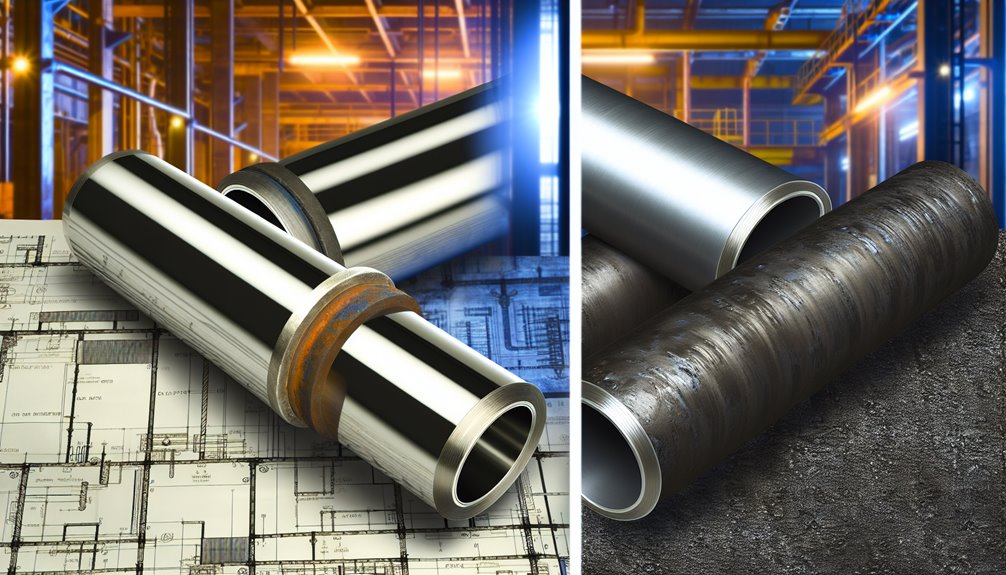
Stainless steel and carbon steel pipes serve distinct purposes across various industries, dictated largely by their material properties.
Stainless steel pipes are preferred in environments requiring resistance to corrosion and high temperatures. Industrial applications of stainless steel include:
Conversely, carbon steel pipes are favored for:
The varied applications of stainless steel and carbon steel pipes underscore their respective strengths; however, their environmental impact and sustainability are equally significant considerations.
Stainless steel is notable for its high recycling potential, with up to 90% of stainless steel products being recycled after use, thereby reducing the demand for virgin material. Additionally, its sustainable sourcing, often from recycled materials, lessens its ecological footprint.
In contrast, carbon steel, though less recyclable than stainless steel, benefits from lower energy consumption during production.
The environmental implications of both materials hinge on their lifecycle and resource efficiency. Decision-makers must weigh the trade-offs between initial energy inputs for production, sustainable sourcing, and the end-of-life recycling potential when determining the most environmentally sustainable option.
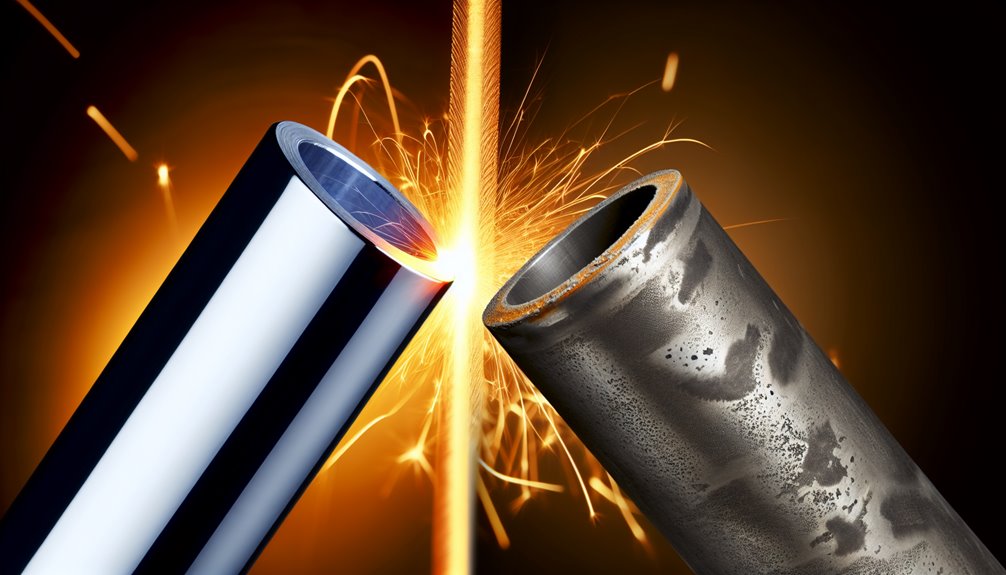
Understanding the welding and fabrication differences between stainless steel and carbon steel pipes is essential for selecting the appropriate material for specific applications. The welding techniques and fabrication methods employed vary greatly between these two materials:
Selecting the right material requires understanding welding and fabrication differences between stainless and carbon steel pipes.
This technical distinction aids in optimizing pipe performance and longevity.
Coincidentally, the surface finish of stainless steel pipes offers a polished design appeal, contrasting with carbon steel's more subdued matte appearance. This difference impacts aesthetic choices, emphasizing stainless steel's sleekness and carbon steel’s utilitarian, industrial look.
Magnetic permeability varies considerably; carbon steel pipes exhibit higher magnetic permeability, hence being more magnetically responsive. Conversely, stainless steel pipes, particularly austenitic types, demonstrate lower magnetic permeability and superior corrosion resistance, aligning with different operational requirements.
A picture is worth a thousand words, yet in metallurgy, color perception hinges on surface finish. Stainless steel typically exhibits a bright, silvery appearance, while carbon steel appears darker, relying on coatings or oxidation for protection.
The current question addresses whether stainless and carbon steel pipes exhibit different acoustic properties. Stainless steel typically offers superior sound absorption due to its denser structure, whereas carbon steel may transmit sound more readily, impacting noise control applications.
In the face of extreme weather, stainless steel pipes, like seasoned warriors, exhibit superior corrosion resistance and consistent thermal expansion. Conversely, carbon steel pipes may falter, prone to corrosion and variable thermal expansion, challenging their performance reliability.
Blog Series:
In the eternal battle between stainless steel and carbon steel pipes, the former emerges as the undisputed champion of resilience, a titan forged in chromium to defy the ravages of moisture and chemicals. Although carbon steel, the workhorse, valiantly serves countless applications, its vulnerability to rust is a glaring Achilles' heel. Ultimately, the choice between them hinges on a meticulous analysis of environmental demands and application-specific requirements, where the stakes are nothing less than the triumph of engineering excellence.
